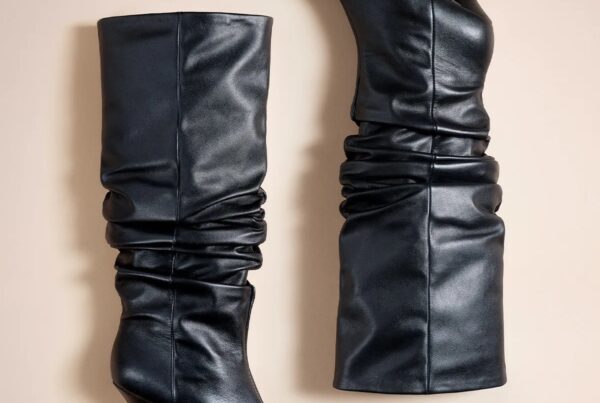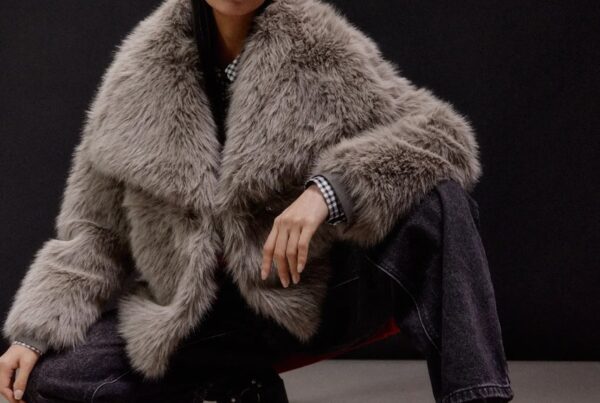In today’s fashion landscape, consumers are increasingly aware of the environmental and ethical implications of their choices. As a result, there is a growing demand for sustainable and ethically-produced clothing and accessories. This article explores various approaches to building a conscious wardrobe, focusing on sustainable fabrics, innovative designs, and ethical brands that prioritize fair practices.
By understanding the benefits of eco-friendly materials and learning how to make informed fashion choices, you can contribute to a more sustainable future while maintaining your personal style. Let’s delve into practical tips and insights that will help you navigate the world of responsible fashion seamlessly.
Table of Contents
Sustainable Fabrics Redefining Summer Fashion
As the summer sun beckons a time of warmth and vitality, fashion enthusiasts are turning their attention to the newest trends that not only look great but also promote environmental consciousness. In an era where sustainability is at the forefront, it’s essential to understand how sustainable fabrics are redefining summer fashion. Transitioning from fast fashion to eco-friendly materials is not just a trend; it’s a movement that champions both style and ecological responsibility.
The Rise of Sustainable Fabrics
The fashion industry has seen a remarkable transition towards sustainable fabrics in recent years. This shift is driven by an increasing awareness of the environmental impact associated with traditional textile production. Here are some of the most popular sustainable fabrics that are shaping summer wardrobes:
- Organic Cotton: Grown without toxic pesticides or fertilizers, organic cotton is soft, breathable, and perfect for hot summer days. Brands like Pact Clothing offer stylish organic cotton options that also prioritize fair labor practices.
- Tencel (Lyocell): Made from sustainably sourced wood pulp, Tencel is known for its moisture-wicking properties and luxurious feel. This biodegradable fabric is incredibly soft, making it an excellent choice for summer dresses and shorts.
- Recycled Polyester: Fashion also takes strides in reducing waste with recycled polyester, made from plastic bottles and other waste materials. This fabric not only diverts waste from landfills but also requires less energy and resources to produce compared to virgin polyester.
- Hemp: Known for its durability and strength, hemp is an eco-friendly fabric that thrives in poor soil conditions, requiring minimal resources. It’s lightweight, breathable, and naturally resistant to pests, making it ideal for summer wear.
Innovations in Design and Manufacturing
The integration of sustainable fabrics in summer fashion also paves the way for innovative design and manufacturing processes. Brands are now focusing on circular fashion, ensuring that garments are made to last, can be recycled, or are biodegradable. This innovation is exemplified by:
- Zero-Waste Design: Forward-thinking designers are adopting zero-waste strategies, creating patterns that use fabric in its entirety, leaving no scraps and thus minimizing waste.
- Natural Dyes: Instead of synthetic dyes, which can be harmful, eco-friendly summer collections increasingly utilize natural dyes derived from fruits, vegetables, and other organic sources, offering unique, vibrant colors.
- Local Sourcing: By sourcing materials locally, brands reduce their carbon footprint and support local economies. This not only promotes sustainability but also enriches community heritage and craftsmanship.
The Intersection of Fashion and Ethics
More consumers are recognizing the importance of ethical fashion. They are not just looking for chic summer outfits but are also concerned about who made their clothes and under what conditions. Sustainable fabrics epitomize this ethical approach by promoting fair labor practices and supporting artisanal communities. When you choose sustainable fabrics, you’re often supporting brands that prioritize transparency and equitable treatment of workers in their supply chains.
As we embrace the warmer seasons ahead, let’s celebrate the wonderful options that sustainable fabrics provide. They allow us to express our individuality while making a conscious decision to protect our planet. By integrating these eco-friendly materials into our summer wardrobes, we contribute to a larger movement towards a sustainable future in fashion, where style meets ethics.
Bold Colors and Patterns in Eco-Friendly Styles
The world of fashion is undergoing a significant transformation, with a growing emphasis on sustainability. As eco-conscious consumers increasingly seek styles that resonate with their values, bold colors and patterns have emerged as a vibrant expression of this new wave of fashion. This section will delve into how these lively aspects are being integrated into eco-friendly styles, highlighting the innovative approaches brands are taking to create both visually stunning and sustainable apparel.
Color Psychology in Sustainable Fashion
The use of vibrant colors in eco-friendly fashion is not merely aesthetic. It taps into color psychology, where different hues evoke specific emotions and responses. For instance, bold blues can inspire calmness, while bright yellows can generate feelings of happiness and positivity. By selecting these vivid colors, sustainable fashion brands are not only making a statement about their commitment to the environment but also aiming to uplift and energize consumers.
Some common bold hues in eco-friendly collections include:
- Deep Greens: Symbolizing nature and renewal, these shades resonate deeply with the ethos of sustainability.
- Bright Reds and Oranges: Often associated with passion and energy, these colors invite attention and spark engagement with the eco-friendly message.
- Vibrant Blues: These colors reflect the sky and oceans, drawing attention to the importance of water conservation.
Patterns That Tell a Story
Patterns play a pivotal role in adding depth and character to eco-friendly fashion. Many brands are embracing prints and designs that are not only eye-catching but also convey important messages. For instance, floral and botanical prints celebrate nature, while geometric patterns can symbolize harmony and balance, reflecting the interconnectedness of all living things.
Brands are now collaborating with artists and designers to create unique patterns that highlight environmental issues. Examples include:
- Institutional Collaborations: Collections that feature prints designed by local artists often tell stories of cultural heritage, sustainability, and community.
- Natural Dyes: The use of plant-based dyes results in stunning patterns that have minimal environmental impact, strengthening the brand’s sustainable narrative.
Sustainable Materials for Bold Fashion Choices
The vibrant colors and intricate patterns in eco-friendly styles owe much to the advancement of sustainable materials. Innovations in textile technology have led to the development of fabrics that not only support bold aesthetics but are also kind to the planet. Popular sustainable materials include:
- Organic Cotton: Known for its soft texture and vibrant color retention, organic cotton is grown without harmful pesticides, supporting both farmer health and ecological balance.
- Recycled Polyester: Made from post-consumer plastic bottles, this fabric can be dyed into striking colors and patterns, reducing waste while promoting sustainability.
- Bamboo Fabric: Naturally biodegradable and breathable, bamboo textiles allow for bright color applications and unique prints that stand out in the eco-fashion space.
Brands Leading the Charge
Various brands are revolutionizing the sustainable fashion industry with their creative integration of bold colors and dynamic patterns. These pioneers not only prioritize eco-conscious practices but also invest in artful designs that attract fashion lovers:
- Reformation: Known for its trendy collections that combine vibrant prints with eco-friendly materials, this brand embodies the fusion of style and sustainability.
- Patagonia: Their high-visibility colors and patterns often raise awareness about environmental issues while using responsibly sourced materials.
- Amour Vert: This brand focuses on sustainable practices by creating colorful, seasonal pieces that feature artisanal prints and eco-friendly fabrics.
As consumers navigate the complex landscape of fashion, the use of bold colors and patterns in eco-friendly styles serves as a welcoming embrace. It fosters a connection not only to fashion but also to the foundational principles of sustainability. By choosing these vibrant expressions, individuals can wear their values with pride.
For more insights into sustainable practices in the fashion world, consider exploring articles from organizations like World Wildlife Fund, which provide extensive resources on sustainability and eco-conscious living.
Ethical Brands Leading the Change
In an age where consumers are becoming increasingly aware of the impact of their purchasing decisions, ethical brands have emerged as beacons of hope in the fashion industry. These brands not only focus on producing high-quality apparel but also prioritize sustainability, fair labor practices, and environmental stewardship. Here, we spotlight some ethical brands leading the way in transforming the landscape of fashion.
1. The Pioneers of Ethical Fashion
Brands like Patagonia, Eileen Fisher, and Everlane have set the standard for ethical fashion by integrating sustainability into their core missions. Patagonia, known for its eco-conscious practices, embraces the concept of the circular economy, actively encouraging customers to recycle old gear. Their commitment to activism, particularly around environmental issues, resonates with consumers who value brand integrity.
Eileen Fisher is known for its timeless designs and a strong emphasis on sustainable fabrics, promoting a vision of fashion that cares for people and the planet alike. Everlane, on the other hand, champions transparency in pricing and production, providing consumers insights into how much it costs to make a shirt or pair of jeans, thus fostering a more conscious shopping experience.
2. Innovating with Sustainable Materials
Brands such as Reformation and Allbirds are also leading the charge toward sustainability by utilizing innovative materials. Reformation focuses on eco-friendly practices, sourcing materials like Tencel and recycled fabrics, significantly lowering their carbon footprint. Their chic, trendy designs attract a younger demographic eager to make responsible fashion choices.
Allbirds, a footwear company that has gained a cult following, emphasizes the use of natural materials like merino wool and eucalyptus trees in their shoes. Their commitment to sustainability doesn’t stop at materials; they also employ a carbon footprint calculator to measure and offset their environmental impact, setting an example for other brands in the industry.
3. Supporting Fair Trade and Local Communities
Beyond materials and production practices, ethical brands also focus on supporting artisans and local communities. Companies like Ten Thousand Villages and People Tree collaborate with artisans from around the world, ensuring fair wages and safe working conditions. This model not only empowers these artisans but also preserves traditional crafts and techniques that might otherwise be lost in mass production.
- Ten Thousand Villages promotes ethical sourcing from artisans in developing countries, ensuring both fair trade practices and cultural preservation.
- People Tree is a pioneer in sustainable fashion, advocating for environmental responsibility while providing transparency in its supply chain.
4. Inclusivity and Diverse Representation
As ethical fashion evolves, brands are also embracing inclusivity and diverse representation in their marketing and product lines. Brands like Savage X Fenty and Universal Standard challenge traditional beauty standards and size inclusivity. By offering a wide range of sizes and showcasing models of various backgrounds, these brands advocate for a more inclusive industry.
This shift not only reflects societal changes but also enhances consumer loyalty, as shoppers are more inclined to support brands that resonate with their values and advocate for social change.
5. Engaging with Customers on Conscious Choices
Many ethical brands engage with consumers by encouraging ongoing conversations about sustainability and responsible consumption. For example, brands like Reformation often utilize social media to share helpful tips on maintaining a sustainable wardrobe and making conscious fashion choices. They empower their customers with knowledge, fostering a community that is not just about purchasing clothes but about making informed decisions.
Moreover, these brands underscore the importance of transparency in their missions, enabling consumers to see the tangible impacts of their shopping habits. Such engagement not only enhances brand loyalty but also educates shoppers on the broader implications of their fashion choices.
Conclusion: A Movement Towards Mindful Fashion
As the movement toward sustainable and ethical fashion continues to gain momentum, the brands highlighted above are leading the charge. They represent a new era in the fashion industry, one characterized by mindful consumption, inclusivity, and environmental stewardship. To learn more about how you can support sustainable fashion, visit TreeHugger’s guide on top sustainable fashion brands.
Accessorizing with Conscious Choices
In the evolving landscape of fashion, accessories play a pivotal role in elevating an outfit while expressing personal style. However, with growing awareness of environmental and ethical concerns, conscious accessorizing has become a necessity rather than a trend. This approach emphasizes not only aesthetic appeal but also the impact our choices make on the planet and society. Here, we explore how to accessorize responsibly while making a statement.
Embrace Sustainable Materials
As with clothing, the materials used in accessories profoundly affect their sustainability. Opt for items crafted from eco-friendly fabrics like organic cotton, hemp, or recycled materials. These sustainable choices not only reduce environmental impact but also support innovative practices in the fashion industry. For instance, accessories made from upcycled denim or recycled plastics not only divert waste from landfills but also create unique, stylish pieces.
- Organic Cotton: A natural fiber that uses fewer chemicals and requires less water than conventional cotton.
- Hemp: A highly sustainable plant that grows quickly and enriches the soil.
- Recycled Materials: Items crafted from repurposed materials often possess a unique character and backstory.
Support Ethical Brands
Choosing to support brands that prioritize ethical practices is fundamental to conscious accessorizing. Many brands today are transparent about their sourcing, labor practices, and overall environmental footprint. By purchasing from these ethical companies, you contribute to a movement advocating for fair labor conditions and sustainable practices.
Before making a purchase, consider conducting a little research or reading about the impact of sustainable fashion on local economies and artisans. Understanding where your accessories come from and how they are made empowers you to make informed choices.
Opt for Timeless Pieces
In a world of fast fashion, it’s essential to embrace timeless pieces that won’t go out of style. Classic designs not only ensure longevity in your wardrobe but also reduce the need for constant purchases. Think of versatile accessories like a chic leather belt, a statement necklace, or a quality watch. These items can effortlessly blend with various outfits and occasions, allowing you to maintain a sustainable wardrobe.
Consider Second-Hand Options
Another fantastic way to be a conscious accessorizer is by exploring second-hand options. Thrift stores, online resale platforms, and vintage shops are treasure troves for unique and stylish accessories. Shopping pre-loved items not only reduces demand for new production but also offers a sustainable solution to fashion waste.
- Thrift Stores: Not only budget-friendly, but they often stock rare finds that tell a story.
- Online Resale Platforms: Websites and apps dedicated to second-hand goods can curate great selections from various sellers.
- Vintage Shops: Perfect for those seeking distinctive pieces with a history.
Utilize Eco-Friendly Packaging
When purchasing accessories, pay attention not only to the product itself but also to how it’s packaged. Eco-friendly packaging made from recycled or biodegradable materials further solidifies your commitment to sustainability. Brands that prioritize sustainable packaging options typically align the rest of their practices with environmentally friendly values.
Conclusion: Small Changes Lead to Big Impact
Accessorizing with conscious choices can transform your style while advocating for the planet and its people. Each mindful purchase contributes to a larger movement toward sustainability in fashion. By embracing sustainable materials, supporting ethical brands, opting for timeless pieces, exploring second-hand options, and choosing eco-friendly packaging, you’re not just accessorizing—you’re making a positive impact.
In recent years, the fashion industry has seen a significant shift towards sustainable textiles, driven by a growing awareness of environmental impacts. Notable sustainable fabrics like organic cotton, Tencel, recycled polyester, and hemp are becoming staples in summer wardrobes due to their eco-friendly properties. Brands are also adopting innovative practices such as zero-waste design, the use of natural dyes, and local sourcing to enhance sustainability, while consumers increasingly prioritize ethical fashion by supporting brands that promote fair labor practices and transparency.
To accessorize consciously, consider choosing items made from sustainable materials, supporting ethical brands, and opting for timeless pieces that reduce the need for constant purchases. Exploring second-hand options can also provide unique finds while minimizing fashion waste. Additionally, pay attention to eco-friendly packaging to reinforce your commitment to sustainability. By making these mindful choices, you can enhance your style while positively impacting the planet and society.













